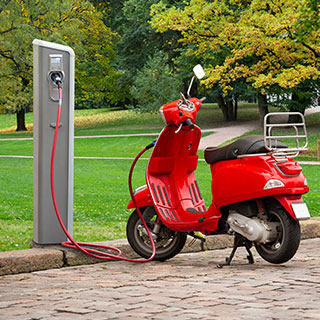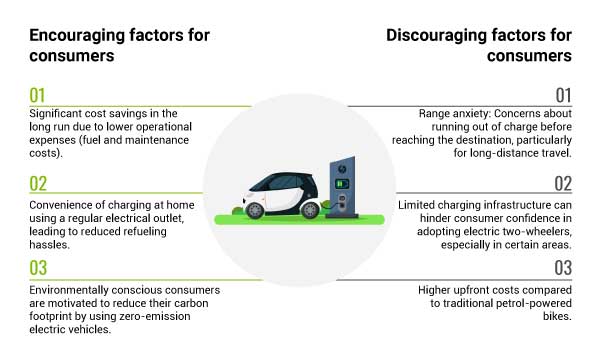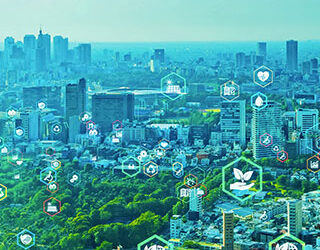Exploring the Shift to Electric Vehicles in the 2-Wheeler Market through Consumer and Stakeholder Perspectives and its Potential for Transformation and Growth

The global shift towards electric two-wheelers is gaining momentum due to concerns over air pollution, rising fuel costs, and government policies that incentivize EV adoption. Electric two-wheelers (E2W) produce zero tailpipe emissions, improving air quality in urban areas. They are also becoming more affordable compared to petrol-powered bikes, thanks to advancements in battery technology and economies of scale. Governments worldwide offer incentives such as tax credits and subsidies to encourage EV adoption. In India, adopting electric two-wheelers can have significant economic, social, and environmental benefits, including reducing carbon emissions and oil imports, as well as generating employment.
However, barriers like high upfront costs, limited charging infrastructure, and the need for awareness exist. Government initiatives like the Faster Adoption and Manufacturing of (Hybrid &) Electric Vehicles in India (FAME-India) scheme aim to overcome these barriers and promote E2W adoption. With the proper support and infrastructure development, electric two-wheelers have the potential to contribute to India’s sustainable development goals while offering a convenient and cost-effective transportation option for the urban population.
 Figure 1: E2W registration and share in India (Source:https://vahan.parivahan.gov.in/vahan4dashboard/vahan/view/reportview.xhtml)
Figure 1: E2W registration and share in India (Source:https://vahan.parivahan.gov.in/vahan4dashboard/vahan/view/reportview.xhtml)
Technological Advancements and Policy Support: Driving the Surge in Electric Two-Wheelers in India
Increasing popularity of electric vehicles (EVs) in the 2-wheeler market is partly attributed to technological advancements. One of the most critical components of an EV is the battery, and advances in battery technology have helped to increase the range and efficiency of electric two-wheelers. Lithium-ion batteries are now widely used in EVs due to their high energy density and longer lifespan. Manufacturers are also exploring new chemistries, such as solid-state and lithium-sulfur batteries, which promise higher energy densities and faster charging times.
Charging infrastructure is another area where technology is making significant advancements. The development of fast-charging stations and battery-swapping solutions is helping to address the range anxiety that many consumers have when considering electric two-wheelers. Fast-charging stations can charge an EV battery to 80% capacity in as little as 30 minutes, while battery-swapping solutions allow users to exchange a depleted battery for a fully charged one in just a few minutes.
Connectivity also plays an important role in the EV ecosystem. Many electric two-wheelers now have features such as GPS navigation, remote monitoring, and over-the-air updates. These features enhance the user experience and enable manufacturers to collect data on usage patterns and performance, which can be used to improve future products. In addition to these technological advancements, government policies and incentives drive the shift toward electric vehicles.
In India, for example, the government has introduced the Faster Adoption and Manufacturing of Electric Vehicles (FAME) scheme, which incentivizes consumers and manufacturers to promote EV adoption. This has increased demand for electric two-wheelers and encouraged manufacturers to invest in new technologies and supply chains to produce EVs. Overall, technology is crucial in driving the shift toward electric vehicles in the two-wheeler market. As battery technology, charging infrastructure, and connectivity continue to improve, we can expect to see even more significant growth and transformation in this sector in the future.
Consumer Perspectives
The increasing popularity of electric two-wheelers can be attributed to factors such as cost saving, charging convenience, and environmental consciousness. Electric two-wheelers offer significant cost savings as their operational expenses are much lower compared to petrol-powered bikes. Charging at home using a regular electrical outlet is convenient and cost-effective. Moreover, environmentally conscious consumers are drawn to electric two-wheelers due to their zero tailpipe emissions and lower carbon footprint. Despite these benefits, challenges like range anxiety and limited charging infrastructure persist, hindering widespread adoption.
To encourage greater adoption of electric two-wheelers, several recommendations can be implemented. Enhancing the availability of charging infrastructure, maintaining charging points, and supporting charging and swapping players can ensure uninterrupted access to charging facilities. Collaborating with financial institutions to offer affordable loans can make electric two-wheelers more accessible to a wider audience.
Implementing a government subsidy or incentive scheme could also reduce the upfront cost of electric two-wheelers, making them more appealing to consumers. Comprehensive research on the electric two-wheeler market, including consumer behavior and charging infrastructure, can inform strategies to encourage adoption. By addressing these challenges and implementing the recommended measures, India can accelerate the clean energy transition and drive the future of electric two-wheelers.
 Figure 2: Encouraging and Discouraging Factors for Consumers (Source: Author)
Figure 2: Encouraging and Discouraging Factors for Consumers (Source: Author)
Stakeholder Perspectives
The shift towards electric two-wheelers is transforming the 2-wheeler industry, affecting manufacturers, dealers, and policymakers. Manufacturers face the challenge of investing in new technologies and supply chains to produce reliable and affordable EVs. Still, they also see significant growth opportunities as early adopters in this emerging market. Electric vehicles require different expertise and technologies than traditional petrol-powered bikes, necessitating research and development investments.
Dealers need to educate consumers about electric two-wheeler benefits, invest in charging infrastructure, and overcome obstacles like low margins and high prices. However, they recognize the potential for higher customer satisfaction and loyalty due to the lower maintenance costs of electric two-wheelers. Policymakers are crucial in facilitating the transition by providing incentives, investments in charging infrastructure, and supportive regulations that encourage widespread EV adoption and collaboration among stakeholders. With the right strategies and support, electric two-wheelers can become a sustainable and efficient mode of transport, contributing to reduced carbon emissions and a cleaner environment in India.
The shift towards electric two-wheelers presents significant challenges and opportunities for various stakeholders in the 2-wheeler industry. While the challenges are significant, electric two-wheeler benefits are compelling, and the trend toward their adoption is likely to continue in the coming years. Coordinated efforts from manufacturers, dealers, and policymakers are essential to drive EV adoption and create an ecosystem that supports the growth of electric two-wheelers in India. By embracing this transition, the two-wheeler industry can lead toward a cleaner and more sustainable future for transportation.
 Figure 3:Encouraging and Discouraging Factors for Consumers. (Source: Author)
Figure 3:Encouraging and Discouraging Factors for Consumers. (Source: Author)
Market Potential
The shift towards electric two-wheelers drives significant growth and transformation in the 2-wheeler market. With concerns over air pollution, rising fuel costs, and the need to reduce carbon emissions, the demand for electric two-wheelers will surge in the coming years. Globally, the electric two-wheeler market is projected to grow from $9.8 billion in 2020 to $13.0 billion in 2025, with a compound annual growth rate (CAGR) of 5.9%.
India, one of the largest two-wheeler markets, is also experiencing a rise in demand, with the electric two-wheeler market expected to reach 2.5 million units by 2025 at an impressive CAGR of 40%. Government policies and incentives, such as the FAME India scheme, are crucial in driving this growth by offering subsidies to consumers and incentives to manufacturers and setting ambitious targets for electric vehicle adoption. The transition to electric two-wheelers has created opportunities for new players to enter the market, leveraging advancements in battery technology and electric motors to offer innovative products. Additionally, traditional manufacturers diversify their product offerings to compete in this expanding market.
Honda, for instance, recently introduced its first electric two-wheeler in India, the Honda e-Activa. Overall, the shift towards electric two-wheelers presents a promising future with increased consumer demand, supportive government policies, and an avenue for established players and new entrants to thrive in the evolving landscape of sustainable mobility.
The way forward
Based on insights gathered from the E2W technology classification, consumer survey, examination of national and state-level policies and schemes, and consultations with stakeholders, the following conclusions and recommendations are proposed. These suggestions are designed to overcome the obstacles hindering EV adoption in India, specifically focusing on the electric two-wheeler (E2W) segment.
- The shift towards electric vehicles in the 2-wheeler market is driven by concerns over air pollution, rising fuel costs, and government policies that incentivize EV adoption.
- Cost savings, the convenience of charging at home, and the desire to reduce carbon footprint are key motivators for consumers adopting electric two-wheelers.
- While challenges like range anxiety and limited charging infrastructure exist, the potential benefits of electric two-wheelers drive the market toward growth and transformation.
- Market trends and projections indicate a promising future for the global electric two-wheeler market, with significant growth expected in India.
 Figure 4: Recommendations to promote E2W adoption
Figure 4: Recommendations to promote E2W adoption
This blog is written by Dr. Vikas Nimesh, Anmol Jain and Md Saddam Hussain




